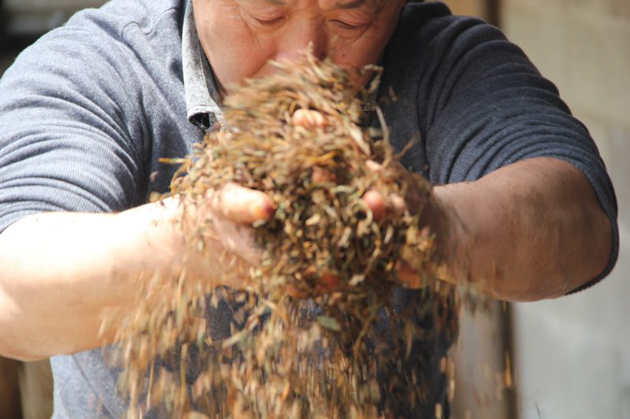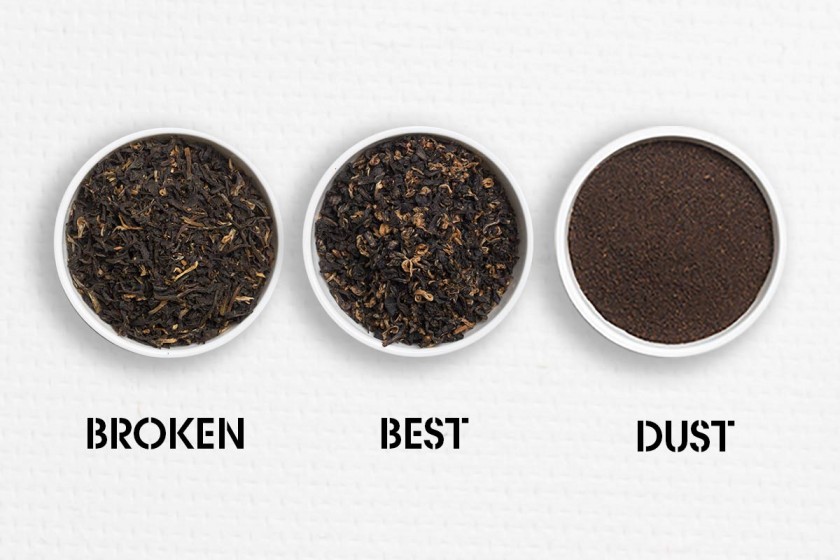Differences in Flavors between Qimen Haoya A and Haoya B Black Tea
Origin: Qimen County, Huangshan City, Anhui Province season: spring tea dried leaves: dark black, glossy buds with golden tips at the top
Fragrance: light flower, chocolate
Tea color: bright orange red
Taste: fruity, long aftertaste, round tea varieties: Qimen Castanopsis carlesii leaf species
Tea Garden: White Pagoda Tea Garden

High quality and competitive price make this Qimen millet tea very popular. Keemun Black Tea is the best kind of black tea in China and is definitely worth drinking. The high quality Qimen millet represents the highest quality generally available for this kind of tea, and its taste, aroma and appearance are sufficient to prove its reputation as one of the best black teas in the world. This kind of tea is handmade in Qimen, the hometown of Qimen. It is really amazing. Tea Garden Baita Tea Garden is located in Keemun Black Tea, Keemun Black Tea black tea from corn production, from Huangshan City. There are more than 9225 acres of eco-grade tea gardens, including nearly 3000 acres of organic certified gardens.
As the fifth generation inheritor of Keemun Black Tea's national intangible cultural heritage, Mr. Wang has more than 30 years of Keemun Black Tea planting and production experience. Over the years, we have been committed to the research and improvement of tea quality to provide healthier and safer products for tea lovers. Mr. Wang once told us that he is still looking forward to bringing more and better tea to tea lovers in the future. Qimen County is located in the south of Anhui Province, west of Huangshan Mountain. Qimen tea has a long history and has long been known as the hometown of Keemun Black Tea in China. Mountain terrain accounts for 90% of the total area, with an average elevation of about 600 meters. Tea gardens are mainly concentrated in valleys between these mountains, ranging from 100 to 350 meters above sea level; forests account for about 80% of these valleys. The temperature difference between day and night is large, the climate is cloudy and the sunshine time is short, so it is suitable for growing tea. The tea variety, Qimen, consists of 31.11% tea polyphenols, 14.66% catechins, 5.42% amino acids, and 44.72% water extraction. This is a nationally recognized variety, suitable for the production of black tea and green tea; this variety of kung fu black tea, taste tight, dark color, long-lasting aftertaste, has a unique fruit and flower aroma, especially known as "Qimen fragrance". The history of Qimen is very short (by Chinese standards), which began in Qimen in 1875. A failed bureaucrat named Yu Gancheng decided to give up his government job and start making tea instead. Because of the high demand and high price of black tea at that time, he went to Fujian to learn how to make black tea; when he returned to Anhui, he introduced black tea to the region, which before that only produced green tea. Over the next decade, the craft and the tea itself continued to improve, and in 1883 the tea, now known as Qimen black tea, was formed. The amazing taste and aroma of this tea, coupled with clever marketing techniques, made it quickly popular and generated huge demand in overseas markets in the UK and the United States. It won an international award at the World Expo in Panama in 1915.
Important Notice :
前街咖啡 FrontStreet Coffee has moved to new addredd:
FrontStreet Coffee Address: 315,Donghua East Road,GuangZhou
Tel:020 38364473
- Prev

Yunnan ancient tree Yunnan black tea is what kind of tea tree? What are the taste characteristics of Fengqing Daye subspecies?
Origin: Pinghe Village, Dashi Township, Fengqing County, Lincang City, Yunnan Province, China season: spring tea harvest date: May 3, 2021 dry leaves: Golden bud tip, slender and compact fragrance: similar to rose fragrance, mixed with fruit and honey tea color: bright orange red taste: mellow taste, long-lasting fragrance /
- Next

Three classifications of black tea: the difference between small black tea, gongfu black tea and broken red tea
In the book "Training Textbook for Tea Appraisers" edited by China Tea Society, black tea is roughly divided into three categories: small black tea, Gongfu black tea and broken red tea. Small black tea is a kind of strip black tea unique to Fujian Province. Small black tea is one of the earliest teas in the history of black tea. THE MINIMALS OF FUJIAN
Related
- A complete list of coffee bean names and their meanings! What is Yejia Shefi coffee? Where is Mantelin coffee?
- What grade does Arida Manor Kaduai coffee beans belong to? What treatment is Arida ASD slow anaerobic sun exposure?
- The milk tea cup becomes smaller?! Overlord Tea Girl launches a new "Return to Yunnan" series
- Accused of selling counterfeit and high-priced coffee beans! Well-known boutique coffee brand "Oukelao" bowed and apologized!
- How to make espresso dumplings? Can I eat coffee and glutinous rice balls together?
- Save the unformed and stagnant powder cakes in one second! What is the problem with stagnant water in the powder bowl of the espresso machine?
- What does hand-brewed coffee stop mean? Why is it not recommended to make coffee by hand?
- Is it normal to smell like coffee? Why does coffee smell like alcohol? What's wrong with the strong smell of cold extract ice dripping ice brewed coffee?
- How to solve the problem that hand-brewed coffee extraction takes too long? Why is the water flowing so slowly when making coffee?
- The main points of making Australian white coffee, the proportion details, how does Australian white properly foam and blend the flowers?

